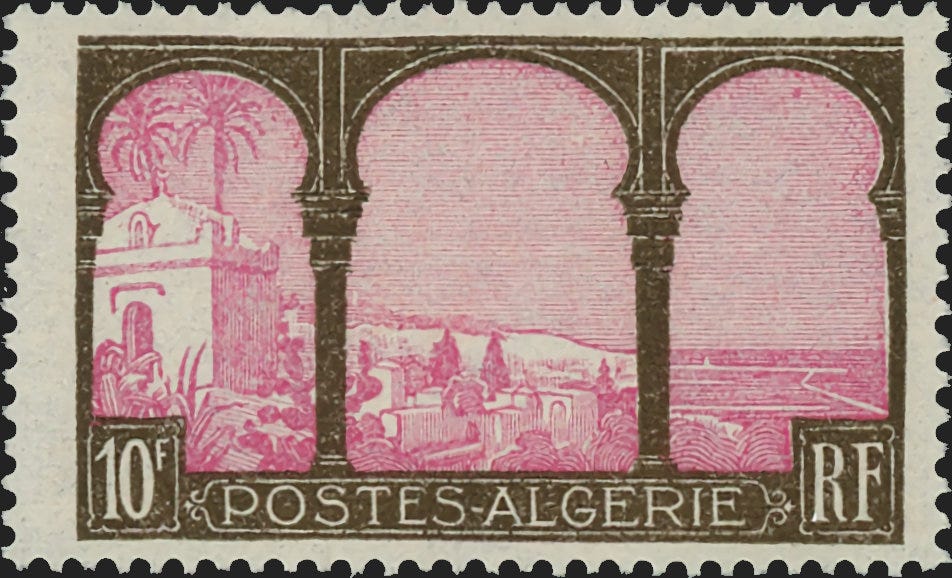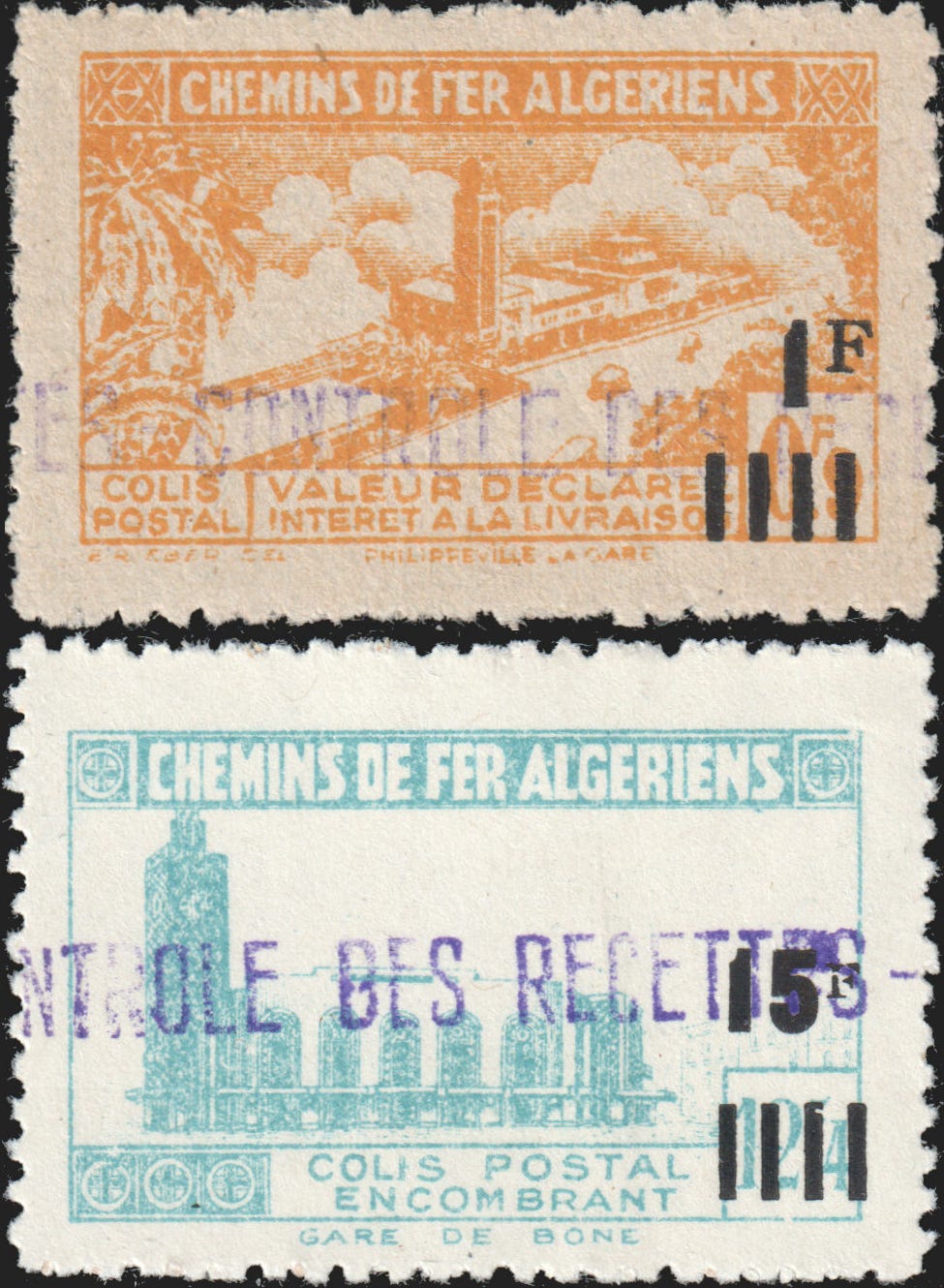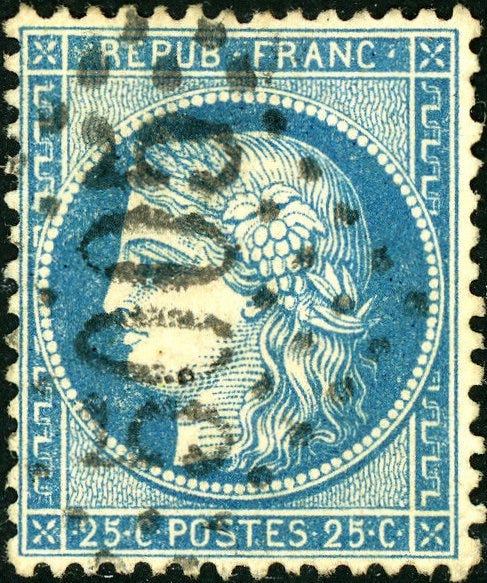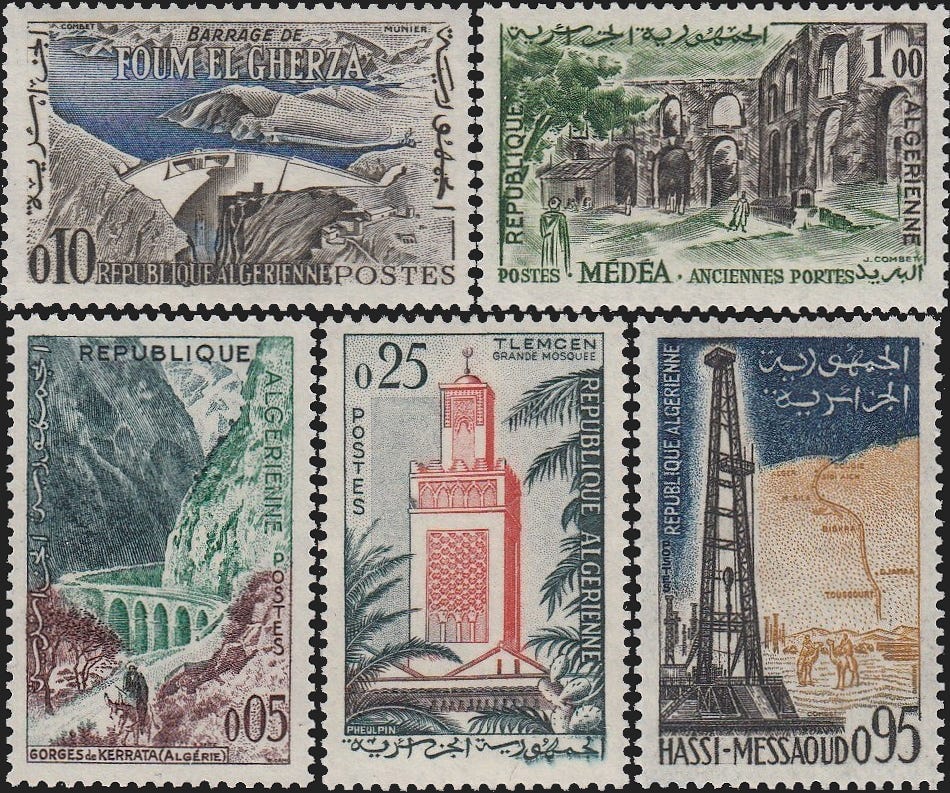For the stamp collector looking for a country for which they can realistically strive for completion at an affordable cost, Algeria is an excellent consideration. It offers attractive stamps and interesting political and postal history. The stamps are, generally, easy enough to find, while offering the thrill of the hunt for some elusive issues, errors, and varieties.
All of the general issues have Scott Catalogue values of under $100, except for the Mint Never Hinged value for Scott Nr 66, the 1927 10 franc “Marabout of Sidi Yacoub,” which lists for $120, though you may be hard-pressed to find one for sale. The stamp in previously-hinged condition, has a catalogue value of $80, but is easily available, at retail, from $20 to $30, depending on centering (and poorly centered examples are the norm).
Scott Nr 66 (1927)
Looking at back-of-the-book (BOB) issues, that is, those which the Scott Catalogue lists after the regular issues, e.g. semi-postals, air mails, and special service stamps, you will find two parcel post stamps (Scott Q2 and Q7) which may blow holes in your stamp budget, with catalogue values of $125 and $350, respectively. I didn’t find any listed for sale, so can’t quote you realistic market values. Algeria also issued Railway Parcel Post stamps, which Scott does not list. I have a few in my collection which only ran a dollar or two each.
Railway Parcel Post Stamps
Beyond the affordability of the stamps, collectors will find an interesting postal history which will keep them engaged and active in the pursuit of new additions to their collections, beginning with the first stamps used in Algeria, in 1849. At this time, Algeria did not have it’s own stamp issues. France had colonized the country beginning in 1830, and in 1849 began using French stamps in Algeria. Mute cancels (with no dates or place names) were utilized at first, so Algerian usage of French stamps must be collected on covers which include a town and date postmark.
In 1852, the “petit chiffres” (or, small numbers) cancels were introduced, which consisted of a grid, or lozenge, made up of dots with a central 4-digit numeral indicating the city of origin of the mailed piece. There are 83 numbers (all beginning with either a 3 or a 4) to find, for 82 different cities. In 1862, due to the expansion of the postal system over the years, a new numbering system was developed, and larger numerals – “grand chiffres” – were used, still 4 digits, but all beginning with the number 5. You will need to find 150 different numbers to form a complete collection of grand chiffres. This system remained in place for 14 years until, in 1876, the circular date stamp (CDS) showing the place name came into regular use.
Grand chiffre 5005, indicating Alger (Algiers)
In 1924, France began producing postage stamps for Algeria, by overprinting existing French stamps with, “ALGÉRIE.” 32 of these stamps, in 24 denominations, were issued from 1924-1926. In 1926, Algeria got its very own issues, inscribed “Postes Algerie.” This first issue, which eventually ran to 35 stamps, was printed by typography and continued until 1939.
Beginning in 1930, line-engraved stamps ruled the day. While most showed off beautiful designs featuring native landscapes and architecture, the French also made it a point to remind the Algerians of who was in charge, here, with a 1937 set commemorating the centenary of the French conquest of Constantine, and a couple of early 1940s issues depicting His Vichyness, Marshal Pétain, as well as later issues showing French military leaders. Resentment by Algerians over French rule mounted, and, not to get too deep into the political weeds, but, suffice to say that, in 1954 the dam broke and revolution broke out. War raged on for 8 years until, in 1962, Algeria gained its independence from France.
Stamp-wise, the first order of business, in July 1962, was to take several French definitive issues and overprint them, obliterating the inscription, “Republique Francaise,” and printing the letters EA, for “Etat Algerie.” These overprints can be found in letterpress type or with handstamps.
EA by letterpress and by handstamp.
These were followed, in November 1962, by Algeria’s first set of stamps as an independent state, Scott 291-295. These were reworkings of previously issued stamps of France, with “Republique Francaise” removed from the plates, replaced by “Republique Algerienne.”
The first stamp issue of independent Algeria, Scott Nr 291-295 (1962)
1962 also saw the issuance of Algeria’s rarest stamp. It is a semi-postal, or charity issue. Semi-postal stamps carry two denominations, one for the postal rate plus another one (usually a fraction of the postal rate) which goes toward a charitable function, in this case to raise money for the War Orphans’ Fund, for victims of the 8-year revolutionary war.
Michel Nr 393; Stanley Gibbons Nr 395a; Yvert & Tellier Nr 363A
It was unusual in two regards. First, it carried a very high charity surcharge of 9 francs, against a postal denomination of just 1 franc. Second, it was inscribed only in Arabic, with no Roman letters as required by the Universal Postal Union.
Because of the high charity surcharge, it is doubtful the stamp saw any valid postal use. The Michel, Stanley Gibbons, and Yvert & Tellier catalogs do not quote a Used value for the stamp, and the Scott Catalogue does not list the stamp at all. Even as Algeria’s “rarest” stamp, it is not, by any means, rare. As I write this, there are no less than nine sales listings on ebay for this stamp, ranging in price from 130 to 170 euros each.
Over the decades up to the present, Algerian stamps have been marked by high quality production and a varied range of subjects covering all aspects of Algerian culture and history. Assembling a collection of Algeria can be as simple or as complex as the collector wishes to make it, and will bring pleasure and satisfaction to anyone wishing to pursue it.










Very nice and concise article on Algeria. Thanks
Excellent article. Highlighting opportunities of affordable collecting is so important both to attract new blood and also retain those already "bitten" in these challenging times when stamp collecting / philately has so much to offer as a therapeutic activity.